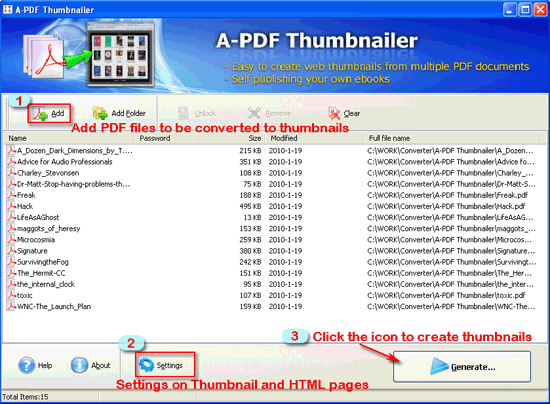

Clicking on thumbnails opens the larger version of the image.

Since these thumbnails serve as preview pictures, they often contain a link to the original image. Using thumbnails in the specific context of previewing digital images has been common since the 1980s. The term was originally used to describe physical images or drawings with a very small size. Thumbnails are downsized versions of larger images that are displayed instead of the original ones. I wish there was a browser out there that tried to be what FF was originally (though that projected image was perhaps as BS as the projected image of FF now? The main criticism of the Mozilla Suite was the bloatedness, was FF just image because it has gone on to be bloated in much the same way).Figure: Thumbnail - Author: Seobility - License: CC BY-SA 4.0

But that has changed, if a user wants rid of feature they need to add more code, which will hide things at best. I do not want nor need my web browser to be capable of delivering applications, nor doing the kind of stuff needed to support applications.įF started off great: to be small and fast, and if people want features they can add them with extensions of plugins. Industry hypes web2.0 so much because it is all about getting users to stop computing on their computers, and to do it on the computers of middlemen (plus put all their data on the business machines) – because the scope for lock-in is so huge. I want to use a web browser, not some kind of poor version of an operating system. This kind of thinking is obviously infesting Mozilla too, and it means their products are fucking piles of shite (yet strangely still the least awful). Even AV routinely now takes a protection racket approach. But what was considered anti-social an unacceptable on computers just 15 years ago is now the norm from corporations: monitoring users, adware, etc. I want rid of all the corporate crap that infests FF, and comes back on its own so frequently (funnily enough habits very similar to malware. Given how the browser is otherwise loaded up with features, it does look like my paranoid reasoning could have some merit.

Mozilla turned the status bar off by default, but then they actually removed it completely. The removal of the status bar was all about obscuring corporate abuses on the web, like the google click tracking on its search, or eg “waiting for ”. The standard line is that it makes things easier – except the hypothetical granny who needs things to be easy still has to learn what the “Awesome” bar trying to acheieve, which overall is more complex that the 3 simple concepts of URLs, history, and bookmarks. I want the address bar to be simple and do what it is meant to: If I need to look in my history or bookmarks I can go there, not try and sift through a wall of bollocks. I don’t want some middleman handling my data, so I have no need for the feature. p:f is also used to recreate the look of frames, but with worse functionality (scrolling with the keyboard works fine with frames, with p:f it can make using the keyboard an annoyance). Stuff that floats in your eyeline when you scroll apage? That’s p:f.
Web page thumbnailer windows#
I want the browser to not honour position:fixed elements, it is abused like pop-up windows were (only worse). I also want rid of geolocation (I will type in my position, I definitely don’t want third parties “helping” and mooching and tracking and monitoring) – though I think if the right geolocation files are deleted from the FF program directory the functionality can be removed proper right now. Great, another feature that has to be turned off, but cannot actually be removed :(Īnd just like Mozilla (Google’s non-profit service delivery specialists) flicked JS back on for users who had it turned it off with a recent update, and removed the UI element to turn JS back off, a feature being there but off is still an immense annoyance and liability (a concept fanboys are unable to comprehend – though when juxtaposed against a real-world case of abuse it is likely to crash their tiny minds).


 0 kommentar(er)
0 kommentar(er)
